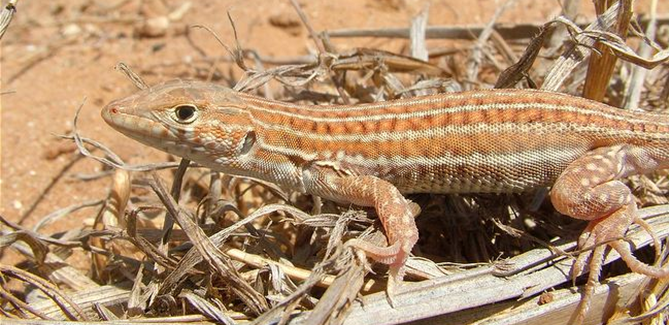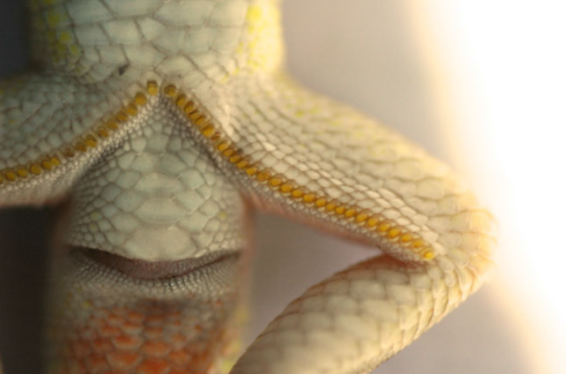11 November 2014 | By Shelley Edwards
C·I·B post-doctoral fellow, Dr Shelley Edwards, is a co-author on a recently published study looking at links between the chemical communication system of lizards and their environment.
Lizards produce chemical signals through glands, and these secretions are spread into the environment through pores in their skin, the best studied of which are the femoral glands situated on their inner thighs. Relatively little is known about signalling using chemical cues, despite the fact that ‘infochemicals’ are used by many species in aquatic and terrestrial habitats. The study sought to use the number of femoral pores to determine how much a particular species relies upon chemical signalling.
Lizards in the family Lacertidae are distributed over much of the Old World, and they utilize a range of microhabitats and substrates (e.g. sand, rocks, grassy vegetation, shrubs, trees). It was hypothesized that lizards from different habitats would have different levels of chemical signals, indicated through their femoral pore numbers. Dr Edwards’s study found that substrate use was linked to pore numbers: shrub-climbing species tended to have fewer femoral pores than species inhabiting other substrates, suggesting that chemical signalling was not as extensively used in shrub-climbing species, and perhaps other signalling mechanisms were better suited for this type of habitat.

This study contributes to knowledge about how lizards interact with their environment and with one another.
“A better understanding of the way an animal functions in its environment is key to making informed decisions about the conservation of our biodiversity. This study gives us information that is important for our understanding of how lizards would be affected if the vegetation was to be changed by, for example, invasive plants.” says Dr Shelley Edwards.
Read the article
For more information contact Shelley Edwards at shelleyedwards@sun.ac.za



